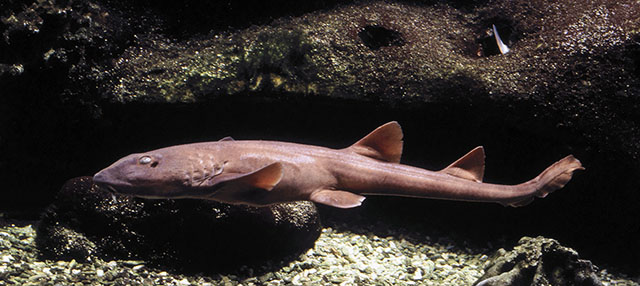| Hemiscylliidae (Bamboo sharks) |
| 77 cm TL (male/unsexed) |
|
reef-associated; brackish; marine; depth range 5 - 100 m, oceanodromous |
| Indo-West Pacific: Pakistan, India, Sri Lanka, Malaysia, Thailand. Reported records of this species from the Philippines, Taiwan, and Japan are misidentifications of
C. punctatum (Ref. 125614). Many country records need confirmation (Ref. 13575). |
|
Dorsal spines (total): 0-0; Dorsal soft rays (total): 0-0; Anal spines: 0-0; Anal soft rays: 0-0. Genus: Nostrils subterminal on snout; pre-oral snout long, mouth closer to eyes than snout tip; eyes and supraorbital ridges hardly elevated; no black hood on head or large spot or spots on sides of body above pectoral fins (Ref. 43278). Caudal fin with a pronounced subterminal notch but without a ventral lobe (Ref. 13575).
Species: Light brown, yellow-brown or grey-brown above, cream below, with 12-13 prominent saddle marks in young, fading with growth and absent in adults (Ref. 13575). Dark bands in juveniles not outline in black (Ref. 13575). Dorsal fins smaller than pelvic fins, without projecting free rear tips (Ref. 13575). Body without lateral dermal ridge (Ref. 4832,43278, 13575). |
| A common inshore bottom shark (Ref. 247). Often found in estuaries (Ref. 4832). Probably feeds mainly on invertebrates (Ref. 247, 43278). Oviparous (Ref. 43278, 50449). Utilized as a food fish (Ref. 171). |
|
Vulnerable (VU); Date assessed: 28 May 2020 (A2d) Ref. (130435)
|
| harmless |
Source and more info: www.fishbase.org. For personal, classroom, and other internal use only. Not for publication.

